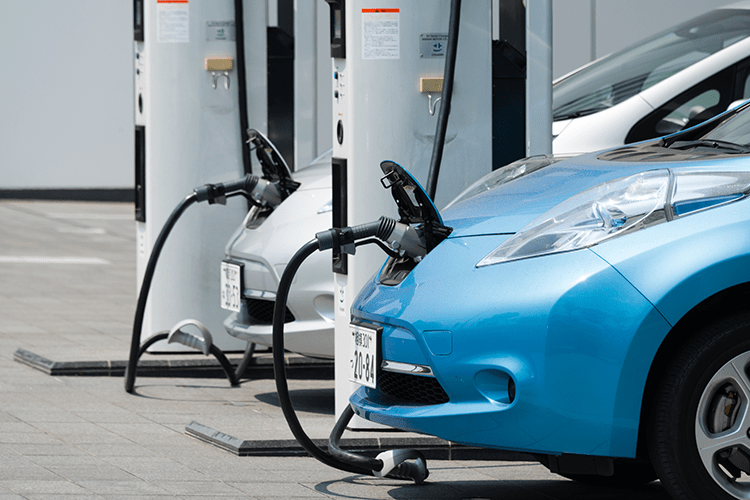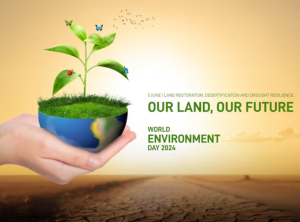The biggest gainer of an EV only drive will be the power sector. However, this is not an open and shut case. There are significant assumptions being made that might prove to be its undoing.
As an important element of the formulation of a larger policy initiative by the government to migrate from a fossil fuel based economy to one that of an eco-friendly one, this article considers the inherent challenges that the country faces during this transition with particular emphasis on the auto sector and how it impacts the eco-system, and what can be the likely and desired outcomes that would benefit the country.
The Core objectives are the outcomes of the various meetings and plenary sessions attended by governments across the world during the COP 21 (Paris Climate Accord) and with the stated aim of reducing the carbon emissions by 80% from the 1990 levels and to limit global temperature rise to little over 2⁰ Celsius by 2050. As part of the broader desire by governments and people around the world to reduce carbon based emissions, three sectors will see a paradigm shift in the way they function and by extension will also impact other sectors that are in some way correlated or have dependencies inherent with them. The three principal sectors are primarily Oil and Gas, Automotive and Power generation.
The automotive sector is a significant one in the case of India. Any disruption or large-scale shift will be more likely prove to be disastrous and cost inefficient if enforced ad hoc and without supporting elements to stabilize it during this transitive phase. The sector contributes to a significant part of India’s GDP and employs millions in both upstream and downstream processes. As of 2017, the sector is around 8+ percent of India’s GDP and estimated to be around USD 100 Billion dollars. The sector also attracted significant FDI on a YoY basis and is one of the few shining examples of the “make in India” initiative.
Given this background, any policy that advocates a rapid and complete makeover needs to be debated prior to actual enforcement and adoption. This is fundamental and should not be ignored if we are to maximise on the gains of the last 30 years. Part of the problem statement here revolves around the nature of disruption. Disruption can be iterative or fundamental. The automotive sector has had a long history of disruption of both technology and ideas. These were organic/iterative in nature (post initial inventions of combustion engine, gears etc). Meaning that technology and engineering were called upon to resolve issues of efficiencies and processes. The basic premise of automobiles and the fundamental way they work have remained unchanged for around the last 100 years or so. An electric vehicle only focus will be a disruption of another dimension altogether. This shift will call into question the accepted way automobiles are designed, manufactured, powered and operated and will bear no resemblance to the automobiles of the last century or so. And we need to keep in mind that the technology that we want to adopt is still in a developmental stage with no clear global standards emerging. This makes adoption a double-edged sword. There have been multiple approaches made and the focus has entirely been to benchmark them against gasoline powered vehicles to demonstrate their efficiencies and competitiveness. This is a strange conundrum and points towards a larger issue.
While writing this, one cannot but think of another great idea that came about post 1945. Nuclear power! The late fifties saw this magic isotope that was the next big idea for global change and a source of unending power for people. 70 years hence, we have trepidations when nuclear power is discussed. The problem was not the nuclear fuel as a power source, but how to operate (safely) process, store and dispose of nuclear waste that became the millstone around its neck. And what’s the relation between electric vehicles and nuclear power? Nothing at first glance, but if we look deeper, the ramifications start to become apparent.
Electric vehicles (as of now) depend on stored electricity or capacitor driven charge for locomotion. The batteries are comprised of harmful chemicals that require safe disposal and waste management. Failure to do so would lead to catastrophic harm to both the environment and humans in general. A rise in the number of vehicles will see an even greater rise in the mining of harmful rare elements and manufacturing of such batteries. And given the lack of enforcement and generally lax safety standards in a country like India – this is just the tip of the iceberg. Another factor is that India depends on polluting power feed stock such as coal and gas to generate electricity. A rise in EV would see a corresponding rise in power requirements and thereby adding to the emissions generated and negating the very reason for the switch to electric locomotion.
What then is the way forward one might ask? The principal task of Policy is to provide a direction and guidance for selecting the Technology path and consequently fix and govern the rules of operation and engagement. Ideally policy needs to be the right mix of serving as a vision document for the foreseeable future as well as detail the laws under which all players must operate. Policy makers are often guilty of emphasising the vision document while leaving the actual operational detailing to concerned government departments to interpret and enumerate. This creates a discordant note between the lofty ideals of what the policy aims to achieve with what it achieves. The EV policy must be comprehensive and aim to fix issues before they become apparent.
Given the nature of dependencies of each ministry and industry groups, there will be a significant element of disruption leading to revenue loss and rebalancing that needs to be undertaken by each player. In terms of extreme revenue loss, the Finance ministry, Petroleum ministry and Fuel distributors will be the hardest hit – in the realms of epochal levels at best. The Finance ministry will lose tax revenues collected from the sale of gasoline and diesel. The hardest hit in terms of revenues will the petroleum downstream chain. As of 2014, 34% of downstream revenues and taxes were generated by the sale of gasoline and diesel which also paid for the subsidies in LPG. This is a double whammy for the Government. They will not only lose revenues from sale of gasoline but also lose if they continue to dole out subsidised LPG. The impact on downstream oil majors like IOCL, Reliance, BPCL and HPCL will need to be analysed. They stand to lose around 35% of their captive market by 2030. And recent media reports of trebling oil refining business, when the largest component of consumption is looking to replace oil altogether calls into question the reasoning and planning that is taking place, or not in reality.
The automotive industry (manufacturers as well as ancillaries and suppliers) will have a mixed level of disruption. The big manufacturers will have a short to medium term period where they have to invest in re-aligning their manufacturing, R&D and business plans. This will call for extreme re-alignment as they might to have to relook existing manufacturing facilities and consider greenfield options. It might also entail joining hands with traditional rivals to overcome lack of research and R&D in EV options. But their chances of being able to make the transition is brighter than ancillary or support units. These are the units that are most likely to be the hardest hit in terms of business going forward. For a start, they are labour intensive and lack the technological backing to have independent R&D to help them in the transition. In most cases, given the fundamental requirements of EV technology, most mechanical auto parts will become largely irrelevant. Units dealing with gearing equipment, transmission, engine and engine parts will have to either shut down or switch to serving other industries.
The biggest gainer of an EV only drive will be the power sector. However, this is not an open and shut case. There are significant assumptions being made that might prove to be its undoing. At present there is a gross mismatch between the installed total power capacity in India and consumption. While there is slight surplus in terms of gross power capacity, the reality is that power is not stable and losses from transmission and theft are significantly higher than global averages. Power is also subject to political compulsions. SEB’s are heavily leveraged and loss making as a rule. The sector has seen significant write offs due to political interferences especially aimed at the farming and rural segments to garner political influence. This in turn raises prices for urban consumers.
Thermal power (which is the dirtiest) is the largest contributor to the grid. And this is not going to change by 2030. While India has made significant advances in Renewable power generation, opaque laws and disregard for existing PPA’s by SEB’s have seen a downward spiral in tariffs for renewables. This has effectively stymied investment in this sector. Another important factor is that the established national grid infrastructure has not been able to stabilize renewable power. In light of this, a correct approach that is ring fenced from political interferences is the need of the hour. And estimated new/replacement 100 million vehicles on Indian roads will increase the requirements for power significantly. This in turn has the propensity to increase our dependence on coal fired generating plants unless the government firmly establishes the need to use renewable power as the principal source for this purpose.
As a consequence of the EV push – Electricity will be the de facto new fuel for vehicular locomotion. Under this new approach it would be interesting to study the possible framework that the government adopts when devising a pricing matrix. The 4 fundamental aspects to Power will be Generation, Distribution, Storage and Usage. As of now quite strangely, we do not hear much about what the government is thinking in terms of “this” power. There is no clarity of how India will proceed and therein lies the conundrum. There should be clarity in terms of how India is planning on generating additional power to cater to the needs of electric only vehicles by 2030. The rider is that generating more power from Coal, Gas or Oil will only increase emissions and pollution and be counterproductive. Clearly the answer is that India has to invest in Renewables and more specifically on Solar and Wind power for generation.
The problem here is that the existing network/grid has to find viable means of storing and distributing this renewable power and the state electricity discoms which are largely government run enterprises have to purchase this additional power at rational costs. Strangely governments around the country have reneged on existing PPA’s and bidding wars between Power generating companies have resulted in Solar power achieving a sale price of INR 2.44/kWh. This when the minimum sale price should be in the region of INR 5/kWh. This means that it’s not a viable option to keep producing or expanding Renewables. Another issue with Renewables have been that while some areas of the country are more conducive to generating renewable power while the rest are not. And because the grid has not been open to fundamental and large-scale changes to accommodate non-traditional power for distribution, more often than not, Renewable power generators have not been able to push through sales even with lower tariffs due to cost of distribution and perceived transmission losses across longer distances.
The Utility versus Commodity Conundrum. The dichotomy in generation costs brings us to another observation – what happens to power that is generated by differing sources? Will they be priced uniformly? Will Renewable power be priced (for consumers) at a discount as compared to Thermal? If so – then the differential loss in earnings for the distribution companies will be an issue. And if Renewable power will not be retailed at discounts – will the consumer be allowed to choose what type of power they would like to purchase? In a free market economy – this is a distinct possibility, but in a government controlled economy like India – this point might be moot. Globally, state controlled discoms have not been part of the distribution/retail of power for vehicles. And there is a very good reason for this – electricity has been commoditized as a retail product for vehicles – this as a concept is not in the DNA of the state discoms who still treat Power as an utility. However in India with notions of state control for greater good – the push back against private distribution and retail of power has been a potential deal breaker from a social/political perspective. This needs to be addressed and incremental policy changes might not work.
Disclaimer: The views expressed in the article above are those of the authors’ and do not necessarily represent or reflect the views of this publishing house
Source: BWDisrupt




